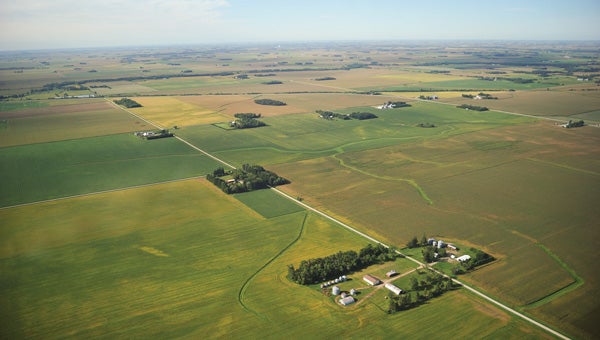Crops ahead of schedule
Published 8:56 am Thursday, September 2, 2010

Farm fields stretch off to the south just east of Austin. Crops are still looking good as farmers get closer to harvest. --Eric Johnson/photodesk@austindailyherald.com
In many ways, this year’s harvest is looking to be a complete 180 shift from last year.
At this point last year, corn and soybeans were at least 10 days behind average after a cool summer that produced a wet crop. Fast forward 12 months, and crops are at least 10 days ahead of average after a warm summer.
“We got a great crop coming,” said Randy Stephenson, manager of the Dexter Elevator. That is, as long as the weather continues to cooperate.
Farmers aren’t only hoping for higher yields than last year. They’re hoping the harvest isn’t accompanied by some of 2009’s problems. Due to the lack of heat last year, Irvin said the corn never fully matured and the crop wasn’t very strong. The corn didn’t store well, and he said the kernels often broke apart.
“It should be — knock on wood — much better quality than last year,” Irvin said.
At the same time, Nathan Augustine, an agronomist with Northern Country Co-Op said he hopes the yield is as good as last year.
“The quality was bad but we had lots of it,” Augustine said of last year’s crop.
Most of the corn should be fully mature by late next week, meaning potential September frosts will have little effect on yields, according to Jeff Irvin, regional manager out of Oakland’s Northern Country Co-Op.
“We’re well ahead of normal pace as far as maturing goes,” Irvin said.
Across Minnesota, many are expecting strong yields, and Irvin said that many fields could produce 200 bushel per acre or better.
Hurdles
That’s not to say there won’t be any hurdles this harvest season. Augustine said the spell of hot weather could affect crops more than people think. He noted that they won’t know for sure how strong the yield is until they get out in the fields.
One deciding factor, according to Augustine, will be how well a field is tiled due to a spell of damp, humid weather.
Even if yields are high, there could still be some issues. Due to a backup of stored crops left over from last year, Irvin said storing and shipping the crop could be a big concern this year.
“If we have the yield in Minnesota that they’re expecting, we’ll be woefully short on storage and transportation,” Irvin said.
Not only are high yields expected, but Irvin said there’s a high amount of carry over from last year. On top of that, there’s not enough storage to keep up with the modern day speed and efficiency of harvest.
“We’re going to have a lot more to move out of here,” Irvin said.
“It’s like running a softball through a garden hose. You can’t do it,” he added.
While many are expecting some issues, Augustine said they’ll just have to pile it up for storage if necessary.
Stephenson expects the same problem. He said the problem could begin after about half the harvest is over, and he said farmers may have to let corn sit in the fields until there is storage space.
“Some elevators have a lot of corn yet from last year, he said.
Stephenson said he believes a lot of that corn is left over because some farmers are waiting for corn prices to go up, even Stephenson said they’re favorable now.
Harvest
Another question mark leading up to harvest is how well the soybean crops will produce. Early in the season, Irvin said many people anticipated strong soybean yields. However, a string of wet and damp weather in late July has led some to question just how good it will be.
“We won’t know until we get the combines in the field,” Irvin said.
While Augustine noted there’s some sudden death syndrome in wet areas, he said there’s less white mold than last year.
Some farmers have already begun chopping silage for feed, Irvin said. If all goes well, farmers could begin harvesting soybeans around Sept. 15, and then corn by Oct. 1, Irvin predicted.
The harvest may come with a reduced expense. Last year, corn was often harvested at about 30 percent moisture and required a great deal of LP for drying. This year, Irvin said the corn is at about 15 percent moisture. If September and October don’t produce any heavy, extended rainfall, there should be very little drying cost this year.
Stephenson said he hopes the weather cooperates, and farmers don’t see the extended rains like last October. If all holds well, farmers could be in for a good year.
“I think we’re going to have a heck of a crop,” he said.


